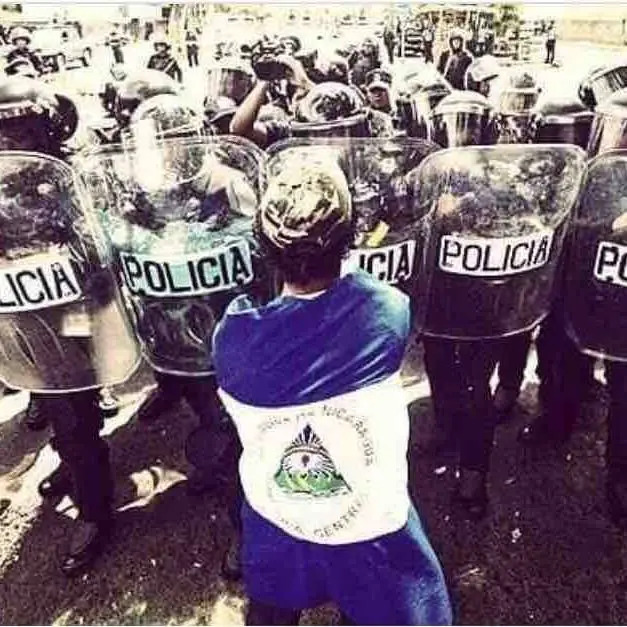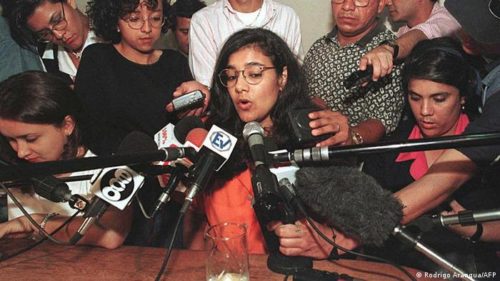By Judith Flores
(Analysis) The radicalization of the dictatorship of Daniel Ortega and his wife Rosario Murillo has beheaded the opposition, revoked the legal status of three political parties, kept more than 200 political prisoners in dungeons, consolidated the repressive state by hiring more agents, and has the support of the Armed Forces, Police and paramilitary groups.
Almost five years after the socio-political crisis that erupted in 2018, the dissident in exile has failed to consolidate an opposition bloc.
Also Read: Check out our coverage on curated alternative narratives
Distrust and opportunism have prevailed in the dissident Sandinismo that governed with Ortega during the first Sandinista regime (1979-1990), who aims to lead that opposition and come to power and install a left-wing regime.

VARIOUS SANDINISMS
Some Nicaraguans believe that Sandinista tendencies can be “understood” again. Their arguments are based on two historical facts that support this thesis.
Before the fight against Anastasio Somoza Debayle’s regime, the Sandinista National Liberation Front (FSLN) was divided into three tendencies – the Prolonged Popular, Proletarian and Insurrectionary Struggle or the third tendency.
The last one, led by the brothers Daniel and Humberto Ortega and Victor Tirado Lopez, to which belonged Dora Maria Tellez, today a politician imprisoned by her former ally.
The other two trends consisted of Thomas Borge Martinez, Carlos Nunez Tellez, Bayardo Arce Castaño, Jaime Wheelock, Henry Ruiz and Luis Carrion Cruz.
The three tendencies united in December 1978 in the final offensive against the Somoza government, which they overthrew on July 19, 1979.
In the communique declaring unity, they declared their “anti-imperialism” and the mediation of the American government.
“We reject imperialist mediation, which is nothing more than a crude interventionist maneuver by which Yankee imperialism tries to make a mockery of the revolutionary aspirations of the Nicaraguan people by implanting a reactionary government subservient to its plans, a Somocismo without Somoza.
We warn that we will intransigently oppose the imperialist intervention, raising the revolutionary rifles against it,” the published document states.
They were throwing themselves against the United States even though they received the support of the democratic administration of Jimmy Carter, who after the Sandinista triumph hosted in the White House Ortega, Sergio Ramírez Mercado and Alfonso Robelo, members of the National Government Junta. Reconstruction.



The three Sandinista groups ruled in a single bloc and established a socialist dictatorship following the directives of Cuba’s communist regime.
It was common to see Sandinista leaders, the so-called nine “commandos” and “guerrilla commanders” like Téllez, meeting and smiling with dictator Fidel Castro.
It was a time when there were extrajudicial executions, public executions, mass graves and imprisonment of anyone who had been a Somocista or an opponent of Sandinismo.
Thousands left the country, first for political reasons, then for economic reasons.
The 1983 Red Christmas on the Atlantic Coast and the mass graves of La Pólvora are among the crimes committed by Sandinismo documented at the time by human rights organizations.
Abuses, persecutions and crimes against the population over a decade led the Sandinistas to lose the elections in 1990, after the collapse of a second war financed on the one hand by the United States and, on the other, by the Soviet Union and Cuba. .
Five years after losing power, the Sandinistas split for the second time.
A sector of Sandinism led by Sergio Ramírez Mercado, former Vice President of Nicaragua, and other leaders created their own party: the Sandinista Renewal Movement (MRS, today Unamos), which calls itself the “democratic left”, despite its origins its criminal. the founders.
REUNIFICATION TO SUPPORT ORTEGA
Six years later, in August 2021, the Sandinistas reunited.
This time for the elections to support Daniel Ortega, the permanent candidate of the FSLN, who two years ago was denounced for sexual abuse and rape by his stepmother Zoilamérica Ortega-Murillo.
In March 1998, Zoilamérica denounced the abuse her stepfather had been subjected to since he was 11 years old in Costa Rica.



Some Sandinista dissidents supported him, but the denunciation was stoned when they joined Ortega to return to power. Stories of sexual abuse mattered little.
The photo taken in 2021, where Ortega and Dora María Téllez, the leader of the MRS, raised their arms to seal their alliance, was captured for history. Zoilamérica’s denunciation was left behind.
These and other facts continue to create mistrust among the population.
Almost five years after the crisis of April 2018, the dissident Sandinismo has located its activists in different countries to create its support network and get funds to “fight” against its former comrade Ortega.
But despite this, it fails to create a bloc of unity, even with the support of a media machine.
This is due to the mistrust they create in the population due to their crimes in the past, which remain unpunished thanks to the amnesties approved in 1990.
Historical Sandinism and its tendencies are once again facing an internal conflict. It is worth noting that more than 70% of Nicaraguans do not support Sandinizma, according to polls.
And while the tyrant Ortega shows arrogance and spouts slurs against “imperialism,” thousands of Nicaraguans are fleeing to the United States for political and economic reasons.
History repeats itself for the second time.
With information from Gaceta
Join us on Telegram: t.me/theriotimes



